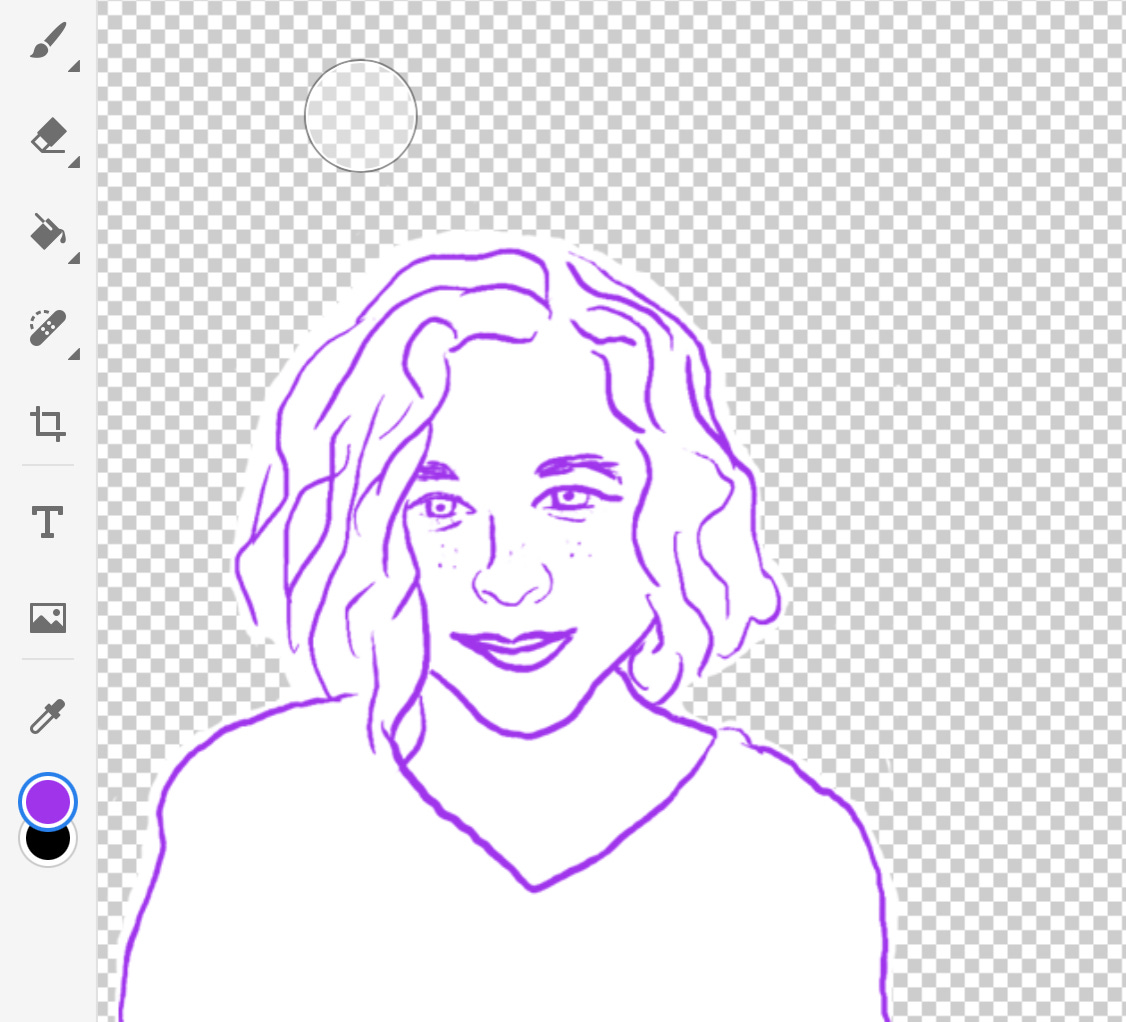At a recent book talk, Mira Jacob referred to her caricatures/comic avatars in Good Talk: A Memoir in Conversations (2018) as “paper dolls.” The same contour drawings of the same characters pop up again and again in front of photographic backgrounds; in these locations, they converse in speech balloons. These paper dolls often have as blank an expression as possible—a purposeful choice, Jacob pointed out, because the lack of expression allows the character to participate in a wide variety of (difficult) conversations.
I’d been thinking that I could use Jacob’s style to help students punch up the dialogue in their comics. So, what follows is a dry run on how to make a “paper doll.” Before we start, I will admit that I was a huge fan of Waking Life (2001) when I was in college, and from that animation learned the term “rotoscoping”—that is, drawing on top of photographic images. A few years later, I used early versions of Adobe Illustrator to create similarly-styled cartoons of my poor, poor friends. I’m not really sure how Jacob makes her comics; this is only an approximation to make something similar. I’m using Adobe Photoshop on the iPad, but you can use a mouse just as well, and any program that allows you make layers.
Step 1: Take a selfie. Try not to grin. Try to take it straight on (no submissive or dominant angles), from the torso up. This is the hardest part—well, that and drawing a nose that looks half-decent. It might help to have a friend take the photo.
Step 2: Import the photo into your drawing program.
Step 3: Make a new layer on top of the photo.
Step 4: Select a brush that you like. Jacob uses a thin line, but you can use one that resembles a crayon, a marker, etc. I selected a purple brush for this demo, just because I like that color. Play around and see what appeals to you.
Step 5: On the new layer, begin tracing the image. You just want the contours, i.e. the lines that make the image recognizable, so you don’t have to worry about shading. Pro tip from Scott McCloud: If you make the lines on the inside a little thinner in weight, even a flat drawing will look like it has some depth.
Step 6: Once you are done tracing the image, you can hide that layer and add a layer to draw a flat white silhouette. Extend the silhouette just beyond your outermost line for the cut-out look that Jacob uses. Note that here Jacob might add some grayscale to the clothes; I kept this one simple.
Step 7: Add a background layer. Select an image of an environment you would like your paper doll to inhabit. I chose a photo from a recent hike; if you use someone else’s image, check the permissions first and remember to credit them.
Step 8: Repeat the process with a friend so they can be in conversation! Add some speech bubbles and text.
Et voila! Now that you have your paper dolls, you can place them in any number of environments and conversations.
LINKS!
To learn more about Mira Jacob, and her graphic memoir Good Talk, check out her website.
Check out another take on the “selfie-portrait” from artist Carla Gannis.
Looks like Waking Life is only for rent/sale…but check out this glowing review from Roger Ebert even if you can’t see it!







